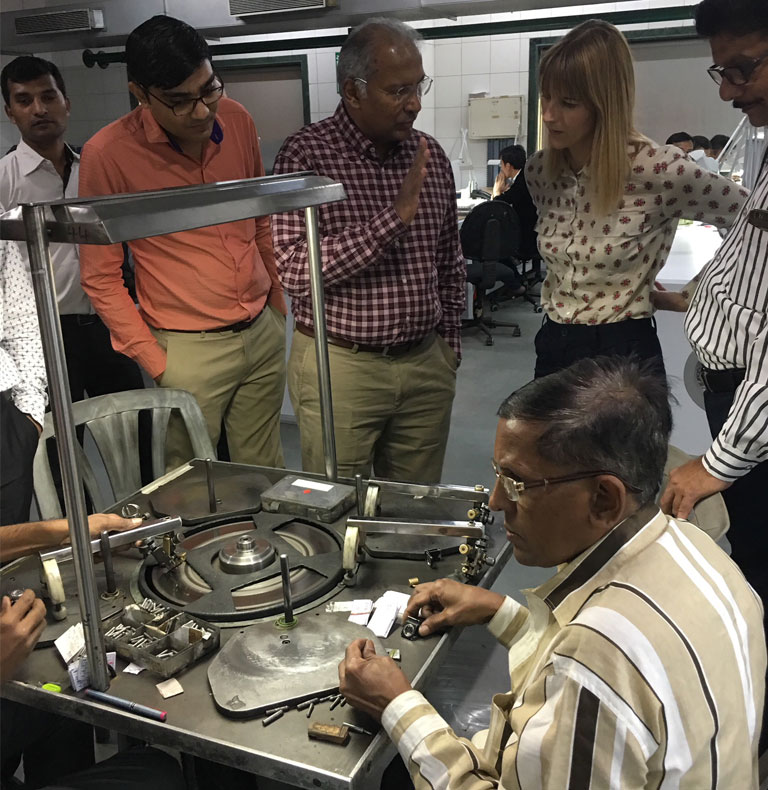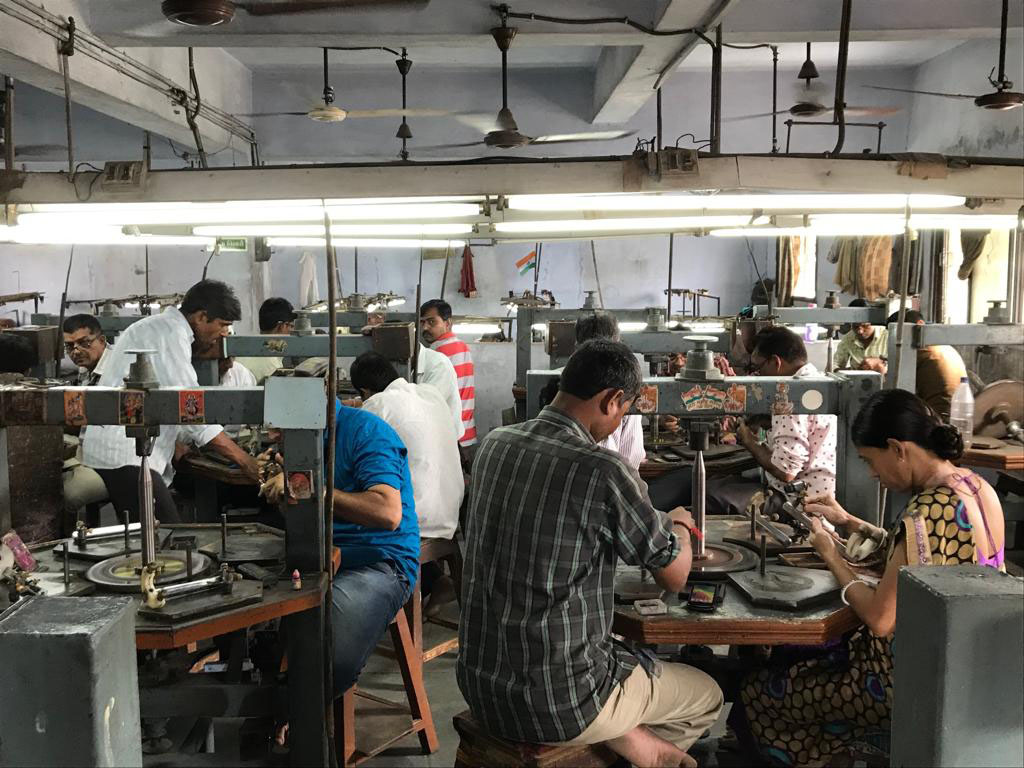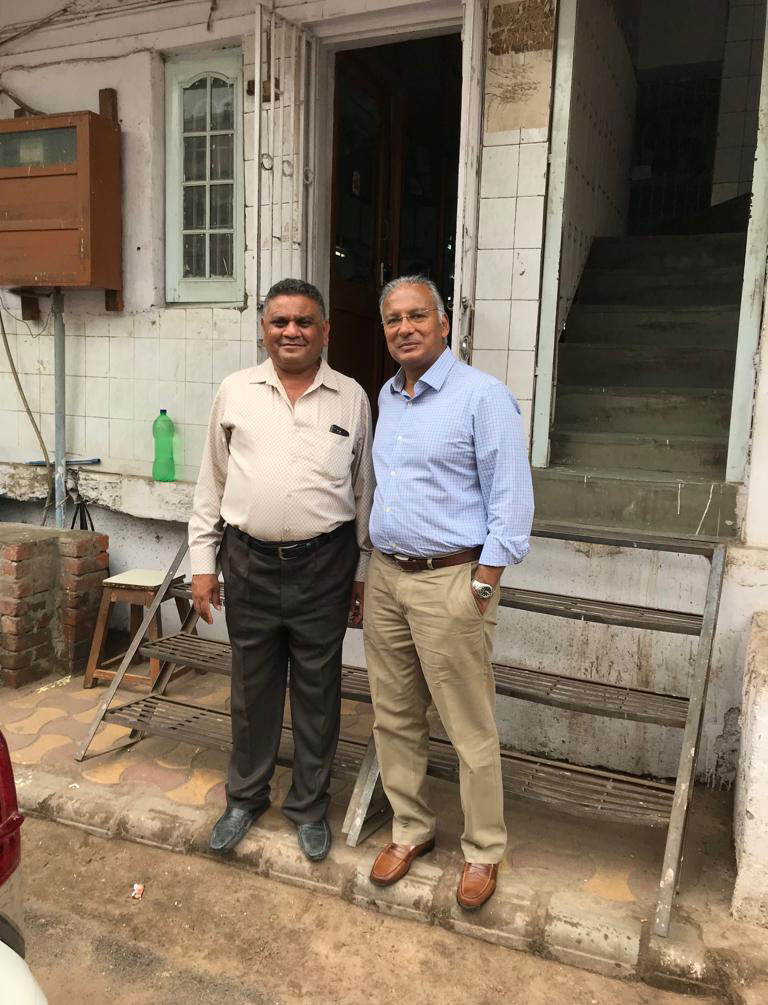RCS Global Group Responsible Sourcing Leadership Series: Our Talk with Rio Tinto About Creating Responsible Diamond Value Chains
October 2018. As part of RCS Global’s Responsible Sourcing Leadership Series, we are conducting interviews with a number of global companies and organisations in mineral supply chains that are demonstrating industry leadership and shaping good practice standards in due diligence and responsible sourcing.
This month RCS Global’s Alice Valvodova sat down with Vikram Merchant, Director – India Representative Office, Rio Tinto Diamonds, to discuss the company’s innovative chain of custody programme for Australian Diamonds and how the diamond industry can transition towards more responsible sourcing practices.

1) Can you briefly tell us about Rio Tinto’s diamond business?
As one of the world’s largest producers of rough diamonds, Rio Tinto is committed to providing a reliable supply of white and coloured diamonds that are mined to the highest possible health, safety and environmental standards.
Our diamond production portfolio encompasses the full range of diamonds in terms of colours, sizes and qualities. Our business model is based on strategic partnerships and we work with all aspects of the supply chain, from mine to market, to develop markets for our products. Like other Rio Tinto companies, we are strongly committed to improving the long-term future for the diverse communities in which our mines operate.
Currently, we have a controlling interest in two world class underground mines. Rio Tinto has 100% ownership of the Argyle mine in Australia and a 60% interest in the Diavik mine in Canada.
2) What does a responsible value chain for diamonds look like?
Rio Tinto’s mine to market approach to its diamonds business has responsible supply chain management at its core. Whilst we are essentially an upstream supplier of rough diamonds, we actively work with downstream partners to ensure transparency and accountability as our diamonds move through the pipeline to the end consumer. Our chain of custody programme in India for our Argyle diamonds is a case in point.
3) As a global diamond mining company, what is Rio Tinto currently doing to enable a responsible value chain for its diamond products?
Rio Tinto has been at the vanguard for reform in the diamond and jewellery industry. We are a founding member of The Responsible Jewellery Council and the first mining company to be certified by the RJC.
However, our story is more than one of compliance. From the early days of Argyle mine in the late 1980’s, Rio Tinto has engaged with the low cost, tertiary diamond polishing units in India to introduce best manufacturing and workplace standards. This knowledge of its downstream supply chain enabled Rio Tinto to develop a tracking mechanism that ensures the integrity of its diamonds from the mine to the retailer. The resulting chain of custody system for our Australian Diamonds, developed with independent auditors and in close co-operation with participating supply chain partners ensures the complete segregation of our rough diamonds, some as small as grains of sand, through the supply chain.
4) What have been the business benefits of your responsible sourcing approach for diamonds?
Whilst Rio Tinto has always focused on the mine and country of origin by keeping our rough diamond productions segregated, we believe that the big opportunity lies in taking the idea of known provenance all the way through the supply chain to finished jewellery. Our Australian Diamonds programme embodies this and is delivering a suite of benefits for accredited cutters and polishers and jewellery retailers around the world. These benefits include a dedicated and reliable supply, a differentiated and compelling offer, enhanced customer confidence, stronger customer engagement, additional sales and greater profitability.
5) What are some of the biggest challenges you are facing?
The majority of Rio Tinto diamonds are processed in India where a thriving cottage industry has developed over the past 30 years.The diamond and jewellery manufacturing industry in India is characterised by a number of unique features including seasonality, piece rate payments, remote locations and a transient labour presence. This makes it challenging to apply a comprehensive responsible sourcing standard, for example, one that is fully aligned with the Responsible Jewellery Council Code of Practices and international good practices. Rather, the structure of the market suggests that a gradual improvement approach would raise standards in the longer term.
By adopting a continuous improvement approach the responsible sourcing requirements are being applied flexibly to different parts of the supply chain. Non-negotiable minimum requirements relating to labour standards and health and safety are set for all entities across the supply chain. Rio Tinto has then invested in driving zero tolerance requirements in small units that lack the expertise and resources to be immediately compliant. Entities are encouraged to go beyond the minimum requirements and implement standards in line with international good practices.
6) What parallels are there between the diamond value chain and other mineral and metal value chains? Are there any lessons which can be applied beyond diamonds?
A diamond jewellery value chain extends beyond diamonds to the precious metals they are set in. These will generally consist of gold, silver and platinum. These metals have a similar value chain comprising of exploration, mining and processing, followed by refining and jewellery manufacturing. Similar processes of a secure and transparent diamond supply chain should be applicable to these precious metals.
7) Do you think retailers and consumers are strongly engaged on the issue of “responsible diamonds”?
Today’s consumer wants to know where their diamond has come from and that all aspects of an industry that represents an ultimate luxury stand up to scrutiny.
For Rio Tinto’s part we want our customers and our customers’ customers to be confident that the journey of their diamond from our mine is a worthy one: that landscapes and cultures are treated respectfully; that local communities prosper; that safe and fair working conditions are provided to our employees; and that we deal honestly and fairly with our industry partners.
8) What is your view on the benefits of applying technology solutions for supply chain assurance like blockchain to diamond value chains?
To set up a secure and transparent supply chain requires verifiable data collection. Reliable data may be available on a variety of individual databases for a small percentage of high value diamonds. For the rest, verification audits must be conducted and data collected from the multiple units involved in the supply chain. For instance, there are 450 diamond and jewellery manufacturing units in the Australian Diamonds chain of custody programme with 40 audit points and 20 data collection points across the supply chain. This information is held on a database and is available to the supply chain administrators. A technology solution that simplifies the process, provides relevant data reports to participating entities and regulatory authorities as well as offers consumers a compelling visual journey of their diamond from the mine to the market will certainly add value to the supply chain. The enabler could be blockchain or another technology solution, but its application will depend on the ability of supply chain participants or willingness of end consumers to pay for the benefits.
9) Is there a sense of urgency for the diamond industry to come together to jointly tackle responsible sourcing challenges?
Diamonds are an expression of love. Today’s consumer wants to know their gift of love has been ethically sourced and responsibly produced. Jewellers around the world have to go beyond verbalising trust and demonstrate their commitment to responsible sourcing. This has become the new normal for our industry.
10) How do you see RCS Global contributing to these efforts?
RCS Global has been a trusted partner to Rio Tinto for the past three years, providing both audit and advisory services. In 2017-2018, Rio Tinto Diamonds appointed RCS Global to review our chain of custody programme for Australian Diamonds against the RJC Code of Practices and other relevant international standards, and also to conduct shadow audits of a sample of entities in India, in view of providing recommendations for improving the programme. We felt RCS Global was uniquely positioned to deliver this work given their expertise, experience and capacity, which span across the entire precious metals and gemstones value chain.
Regular engagement with prominent standard-setting bodies to positively shape standards and due diligence practices in the precious metals and gemstone industry including the Organisation for Economic Co-operation and Development (OECD), RJC, London Bullion Market Association and World Gold Council places RCS Global in a unique position to build “coalitions of the willing” and harmonise industry initiatives into longer term industry opportunities.
Furthermore, RCS Global can assist the diamond industry to build credibility by developing robust measurement and reporting frameworks for its responsible sourcing programmes.

